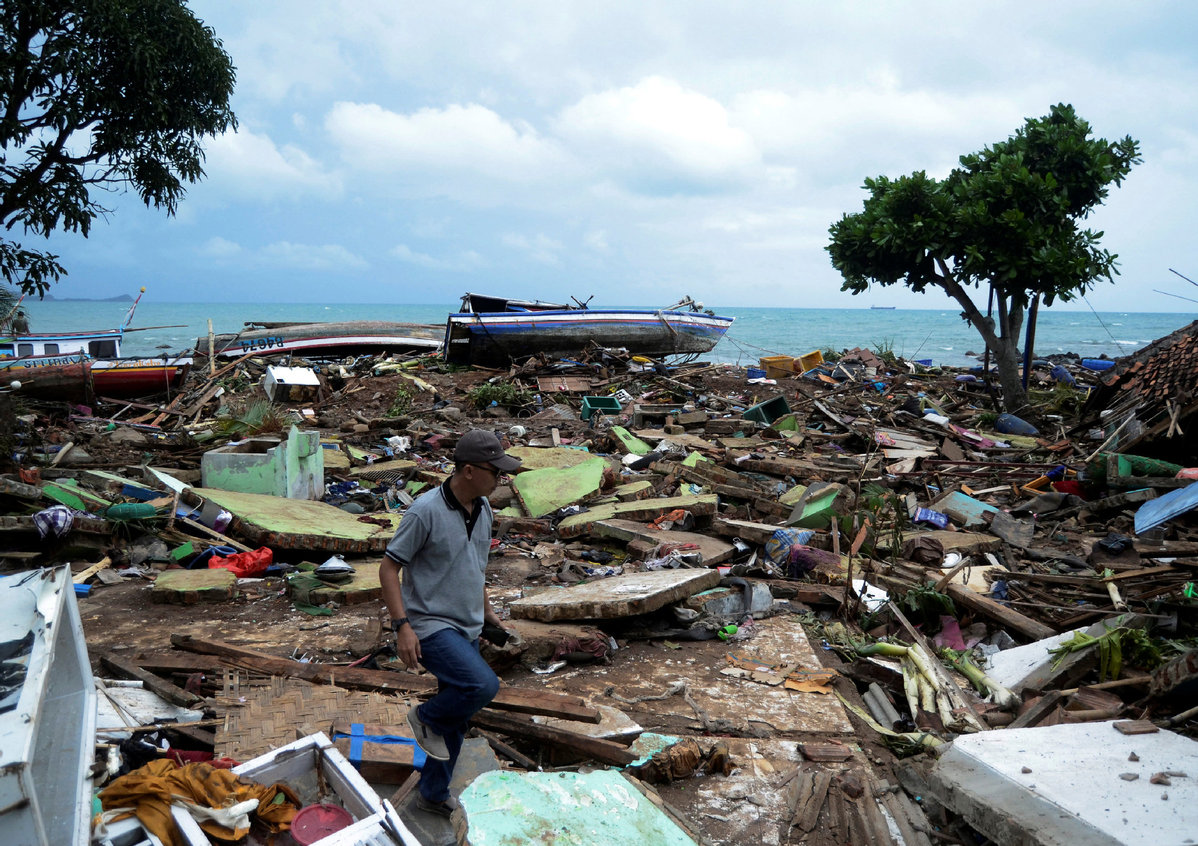
From the People's Daily App.
This is Story in the Story.
With the full operation of an advisory center authorized by the United Nations, China has started offering tsunami warning services to nine countries in the South China Sea region.
Built by China and authorized by UNESCO’s Intergovernmental Oceanographic Commission, the South China Sea Tsunami Advisory Center in Beijing began its trial operation in January 2018.
"Since the trial operation, the capability of the center has been increasingly enhanced," said Wang Hong, chief of the State Oceanic Administration under the Ministry of Natural Resources.
He also said the Smart Tsunami Information Process System, which China owns independent intellectual property rights to, has been operating stably since the trial.
The system will beef up tsunami mitigation capability in the South China Sea region. The center is now hosted by China's National Marine Environmental Forecasting Center, an affiliate of the ministry.
Today’s Story in the Story looks at the likelihood of China facing the risk of tsunamis.

A local walks as he searches for his items among debris after a tsunami hit at Rajabasa district in South Lampung, Indonesia, Dec 23, 2018. (Photo: China Daily)
Yu Fujiang, director of the forecasting center, said the tsunami advisory center is now able to send out warnings only about 10 minutes after the occurrence of an earthquake thanks to the smart system.
With access to real time data from over 600 earthquake monitoring stations, 530 of which belong to foreign countries, the tsunami advisory center is able to determine the basic parameters of earthquakes within three to five minutes no matter where they occur in the world, he said.
In addition to the more than 100 domestic stations for water level monitoring, the tsunami advisory center can also share data from over 800 such stations worldwide, he added.
The center will help strengthen the overall Intergovernmental Oceanographic Commission Tsunami Program, which ensures global intergovernmental coordination of regional warning systems, capacity development activities and the support of national and regional projects, said Vladimir Ryabinin, executive secretary of the Intergovernmental Oceanographic Commission.
“China has provided another important and continuous means of support to sustainable oceanic development by establishing the SCSTAC,” he said.
The tsunami advisory center is the third supporting center for the commission's Pacific Tsunami Warning and Mitigation System. The other two are hosted by the United States and Japan.
Its full operation means that the interim tsunami services provided by the Northwest Pacific Tsunami Advisory Center will end. That center, which is hosted by the Japan Meteorological Agency, serves nine countries in the South China Sea region including China, Malaysia and Vietnam.
The United Nations built the Pacific Tsunami warning and mitigation system after the deadly Indian Ocean earthquake and tsunami in 2004. In 2011, China decided to build its own early-warning center under the UN framework.

(Photo: CGTN)
"We faced some challenges in international coordination during the process. It takes a great deal of efforts to incorporate and share massive data and resources among different countries and regions," said Yu.
The carnage of the tsunami in Indonesia at the end of 2018 has triggered a global awareness in preparing for unexpected natural disasters.
The tragic losses in Indonesia and the safety concerns along the coastline raise the question of whether China also faces the risk of tsunamis. The question remained in the dark due to the lack of reliable historical records and geological investigations in the past.
However, a recent study published by researchers from the University of Science and Technology of China indicates that a tsunami severely threatened the coastline of Chinese mainland about a thousand years ago.
The study is based on previously discovered evidence on Dongdao Island in Xisha Islands in the South China Sea, which suggests that a tsunami occurred in the South China Sea around 1024.
The research team conducted geological investigations on Nan'ao Island of Guangdong Province in southern China. The goal was to see if there was any new evidence that might suggest if the coastline could face the risk of a similar type of tsunami that once battered Dongdao Island.
The risk of large tsunamis in the South China Sea primarily comes from the Manila trench that lies in the Philippines. It is often associated with frequent earthquakes and volcanic activities.
The study reveals the possibility of a tsunami in the South China Sea and calls for attention in preparing for this destructive natural disaster, and evaluation of whether infrastructure projects along the coastlines would be able to sustain the risk of being struck by a tsunami.
(Produced by Nancy Yan Xu, Brian Lowe, Lance Crayon and Da Hang. Music by: bensound.com. Text from China Daily and CGTN.)


